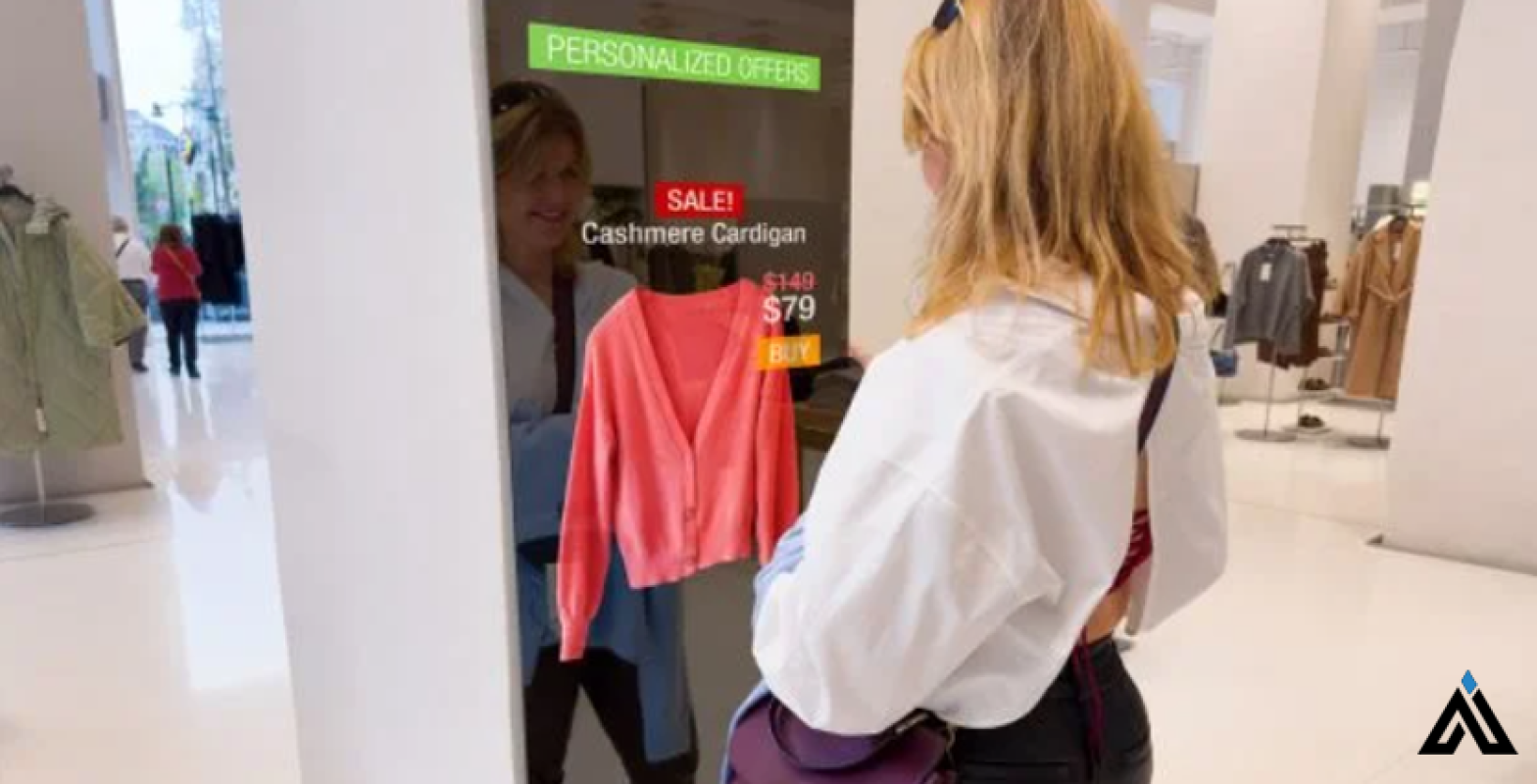In an era where convenience and personalization are paramount, the retail industry is undergoing a significant transformation powered by the integration of artificial intelligence (AI). Smart mirrors, AI-powered personalized shopping experiences, and frictionless checkout systems represent the forefront of retail innovation, promising to redefine the landscape of both physical stores and e-commerce platforms. These advancements leverage AI to deliver data-driven insights and interactive displays, revolutionizing the way consumers interact with products and brands. As artificial intelligence in the retail market continues to evolve, understanding its impact and potential applications becomes essential for small business professionals looking to stay ahead in a competitive environment.
This article will explore the intersection of AI and retail, highlighting the importance of smart mirrors in retail, the deployment of AI-powered interactive displays, and the proliferation of frictionless checkout systems. From providing personalized shopping experiences based on data-driven insights to improving inventory management with advanced AI technologies, we will dive into AI in retail examples and AI in ecommerce examples that illustrate the transformative power of artificial intelligence in the retail industry. By offering an overview of the latest in-store technologies and discussing the best smart mirrors available, this piece aims to equip you with the knowledge needed to leverage AI for retail innovation, ensuring a competitive edge in the rapidly changing market landscape.
AI-Driven Personalization
Tailored Recommendations
AI-driven personalization in retail harnesses vast amounts of data like purchase history, browsing behavior, and demographic information to deliver highly accurate product suggestions. By leveraging machine learning algorithms, retailers can offer personalized product recommendations that align closely with individual customer preferences, significantly enhancing the shopping experience and boosting purchase likelihood.
Enhanced Customer Journeys
AI technology transforms traditional customer journey mapping by providing real-time insights and predictive analytics. This dynamic approach allows retailers to anticipate customer needs and adapt their strategies accordingly, offering a tailored experience that improves customer satisfaction and retention. Through continuous data analysis, AI identifies emerging patterns and preferences, enabling businesses to deliver personalized content and offers that resonate deeply with each customer.
Predictive Analytics for Customer Preferences
Predictive analytics plays a crucial role in understanding and anticipating customer behaviors and preferences. Utilizing advanced AI techniques, such as machine learning and natural language processing, retailers can analyze past interactions and predict future needs. This capability not only helps in optimizing marketing and inventory management but also enhances the customer's engagement by providing them with relevant offers and information before they even realize the need, creating a proactive rather than reactive customer service experience.
Smart Technology in Retail
Smart Mirrors and Virtual Try-Ons
Smart mirrors in retail are transforming the shopping experience by combining advanced virtual reality with traditional shopping practices. These mirrors, using augmented reality and integrated cameras, enable customers to see how outfits and accessories look on them without physically trying them on. By analyzing data like previous purchases and customer preferences, smart mirrors provide personalized product recommendations, enhancing customer satisfaction and streamlining the shopping process.
AI-Powered Chatbots
AI-powered chatbots revolutionize retail customer service by providing 24/7 assistance. These virtual assistants handle routine inquiries, process orders, and offer personalized shopping advice, freeing up human agents for more complex tasks. By leveraging AI, chatbots can deliver quick, personalized responses, significantly reducing wait times and improving the overall customer experience.
AI for Visual Search and Product Location
Visual search technology allows customers to search for products using images, making the shopping experience more intuitive and engaging. This AI-driven approach analyzes the uploaded images to find similar items in the retailer's inventory, offering a personalized and efficient shopping journey. Visual search not only enhances user engagement but also increases sales by making product discovery simpler and more accurate.
Frictionless Checkout Systems
Amazon Go and Just Walk Out Technology
Amazon Go revolutionized the retail scene with its Just Walk Out technology, first launched in Seattle in 2016. By integrating a network of cameras and sensors with advanced algorithms, this system allows you to simply enter a store, pick items, and leave without the traditional checkout process. The items you select are automatically added to a virtual cart and billed to your account as you exit, streamlining your shopping experience significantly.
Automating the Checkout Process
The core of cashierless technology lies in its ability to automate the entire checkout process. Using a combination of artificial intelligence, computer vision, and sensor fusion, the system tracks the items you pick up or return. This automation extends beyond simple convenience, enhancing operational efficiency and reducing the need for manual labor at checkouts.
Benefits and Challenges of Cashierless Stores
Implementing cashierless systems like Amazon Go offers numerous benefits, including reduced wait times and a seamless shopping experience that can significantly boost customer satisfaction and store throughput. However, challenges such as ensuring the accuracy of charges and managing privacy concerns remain. As these technologies evolve, they promise to further transform the retail landscape, making shopping faster and more enjoyable while also presenting new challenges in terms of data security and customer trust.
Conclusion
Throughout this exploration into the nexus of artificial intelligence and retail, we've navigated through the transformative effects of smart mirrors, AI-driven personalization, and the game-changing concept of frictionless checkout systems. Highlighted examples illustrate not just the potential but the real-world impact AI technology is fostering within the retail sector—from enhancing customer experiences with virtual try-ons and personalized recommendations to streamlining operations via cashierless checkout technologies. These advances are guiding retailers and e-commerce platforms alike towards a future where shopping experiences are more interactive, personalized, and efficient, setting a new standard for consumer expectations and operational excellence.
As we stand on the brink of this technological revolution, it's apparent that the integration of AI in retail holds far-reaching implications for small business professionals. Embracing these innovations offers a pathway to not only optimize their operations but also to craft uniquely tailored experiences that resonate with their clientele. In moving forward, it's imperative for businesses to stay abreast of technological advancements, adapting and evolving their strategies to harness the full spectrum of opportunities AI presents. The journey into the future of retail, powered by artificial intelligence, is poised to unlock new levels of engagement, efficiency, and growth, marking a pivotal chapter in the evolution of the shopping experience.
FAQs
There are no questions and answers provided in the "People Also Ask" section for this topic. Please provide the relevant questions and answers or specify another request.








Comments